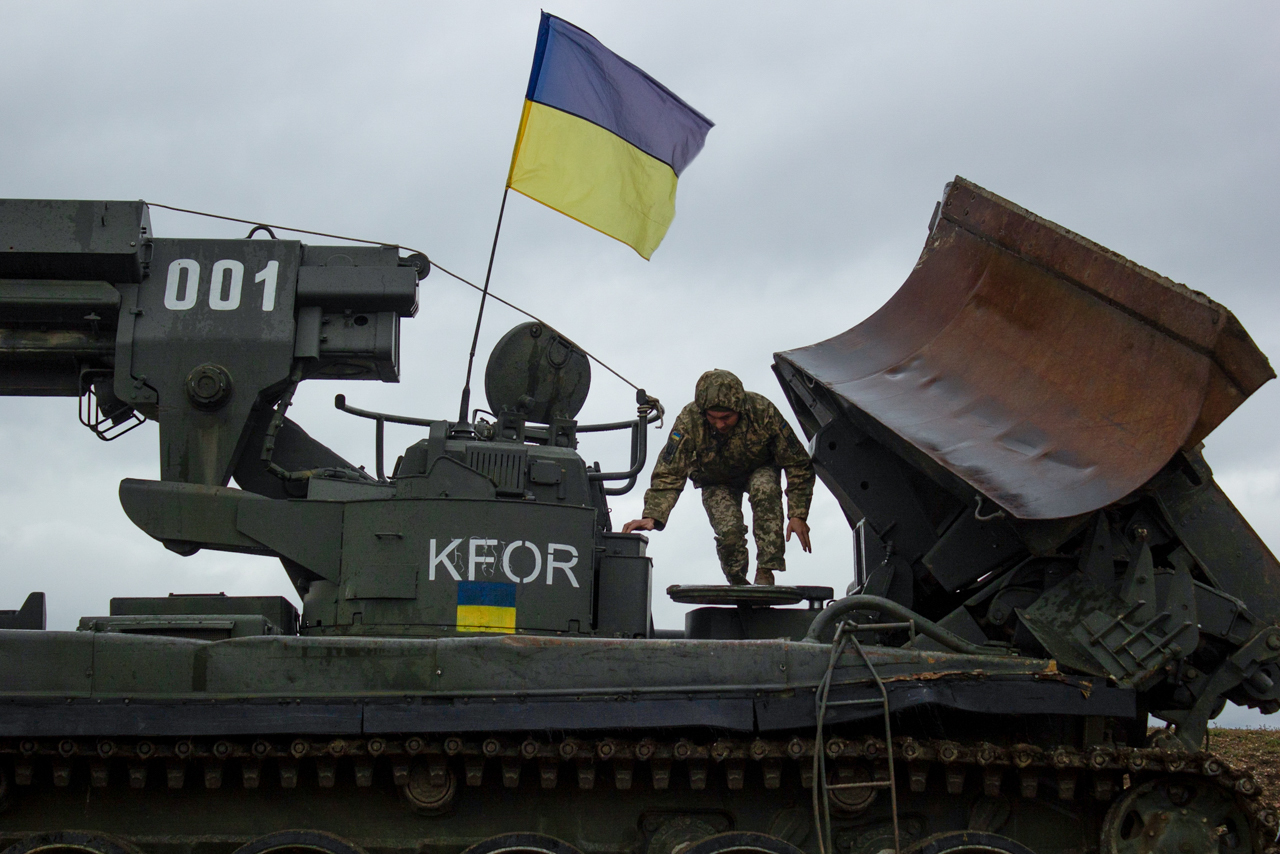
Russian ground forces are showing they “were not ready to carry out high-intensity operations” requiring quick decisive action when the Kremlin invaded Ukraine, France’s highest-ranking military officer said Tuesday.
Speaking in an online forum through an interpreter, Gen. Thierry Burkhard said these kinds of operations “require a lot of effort and a lot of time for training.”
Even the French, United States and United Kingdom land forces are not at that level of readiness yet, despite exercising together at the corps level, Burkhard said.
When asked about reports that Poland will be sending MiG-29 fighters to U.S. bases in Germany and from there to Ukraine, Burkhard said at the Center for New American Security event France “cannot become co-belligerents” in the war. He added it was essential that Ukraine receive needed military aid from NATO and European Union nations, but what kind was “not something to be commented upon.”
Burkhard said one lesson learned so far in the two-week-old conflict is how effective Kyiv has been in information operations to counter Moscow’s disinformation campaign against the government of President Volodymyr Zelensky.
“We need to learn a lot in the world of perception” from the Ukrainians, he said.
In response to the Ukrainian crisis, Burkhard said France has worked with the United Kingdom and Belgium in sending aircrafts to alliance members on the Black Sea and bolstered their air defenses, all under NATO’s aegis. He said Paris and Brussels also dispatched 700 troops to Romania who “are being embedded in their defensive plans.”
In addition, France’s aircraft carrier Charles de Gaulle has joined the American Harry S. Truman Carrier Strike Group with warships from other European allies in stepped up air policing operations from the Adriatic Sea eastward. Burkhard added the French navy is also closely monitoring Russian activity in the eastern Mediterranean from Syria to the Bosphorus Strait in Turkey.
Lastly, Burkhard said France has committed 2,700 more soldiers to NATO for defense in Poland and the Baltic states to deter any Russian moves in their direction.
“There’s a huge difference between … high-intensity conflict” and the long struggles with terrorist groups in Afghanistan and Iraq and for the French in Africa’s Sahel, he said. Burkhard said France made a conscious shift of emphasis to have a strategy in place, as well as equipment from armor to warships to aircraft and technology and forces for that different kind of warfare.
Events in Ukraine this year demonstrated the need for that strategy shift and also how quickly a “competitive phase” of relative peace can escalate from dispute, as it did over Crimea, to military confrontation.
A “framework” power like France, a term he used several times, with its fleet of ballistic missile submarines and aircraft carriers and advanced aircraft and modernized armor and maneuver forces needs to be credible to deter would-be adversaries from acting.
“We need to think differently [and] not fall into the trap” adversaries have prepared.
Burkhard said France is committed to long-term modernizations like its Project Scorpion replacement of its fleet of ground vehicles and systems to operate more effectively with allies and partners in the 21st century.
On why France has chosen a different path from the United Kingdom when it comes to investment in new kinds of armored vehicles, Burkhard said he never wanted to be in a position where he had to tell his president, “I cannot do this.”
He added, “we need to have armored vehicles … that are credible.” That means the vehicles have 5-G communications links from company to brigade level and are interoperable with allied systems in receiving and transmitting crucial data to speed the pace of operations.





